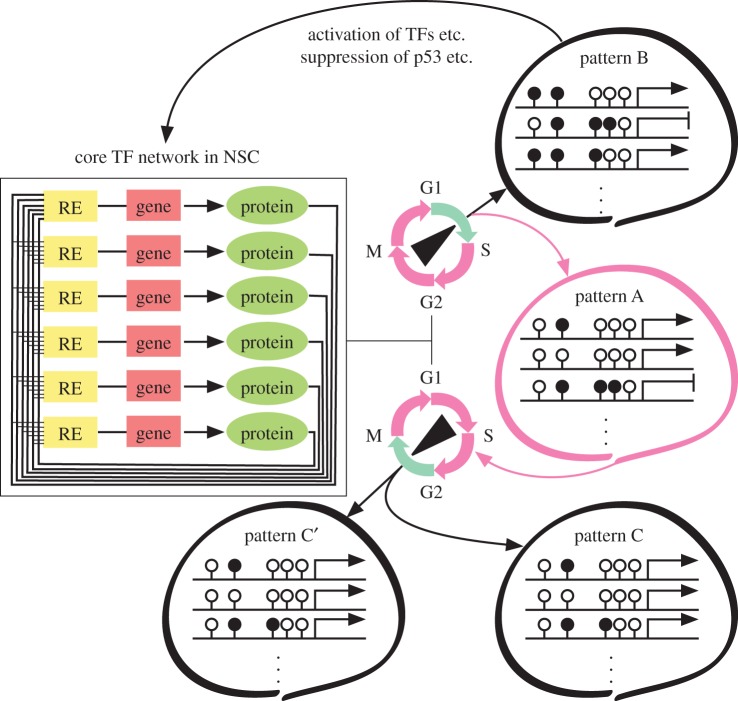Figure 3.
A model for cell-cycle-dependent epigenetic choice driven by master regulator networks. Pink and blue curved arrows indicate hypothetical cell-cycle phases at which cellular genomes are affected by stable and fluctuating epigenetic modifiers, respectively. Neural differentiation occurs in a restricted time window at the transition from G1 to S phase [75]. If the asymmetric division occurs to produce a differentiating cell (pattern A) and a proliferative cell (pattern B), the respective epigenetic patterns become different from each other. If epigenetic choice occurs after S phase, such cells may produce two daughter cells in which the epigenetic patterns are similar to each other (patterns C and C′).

